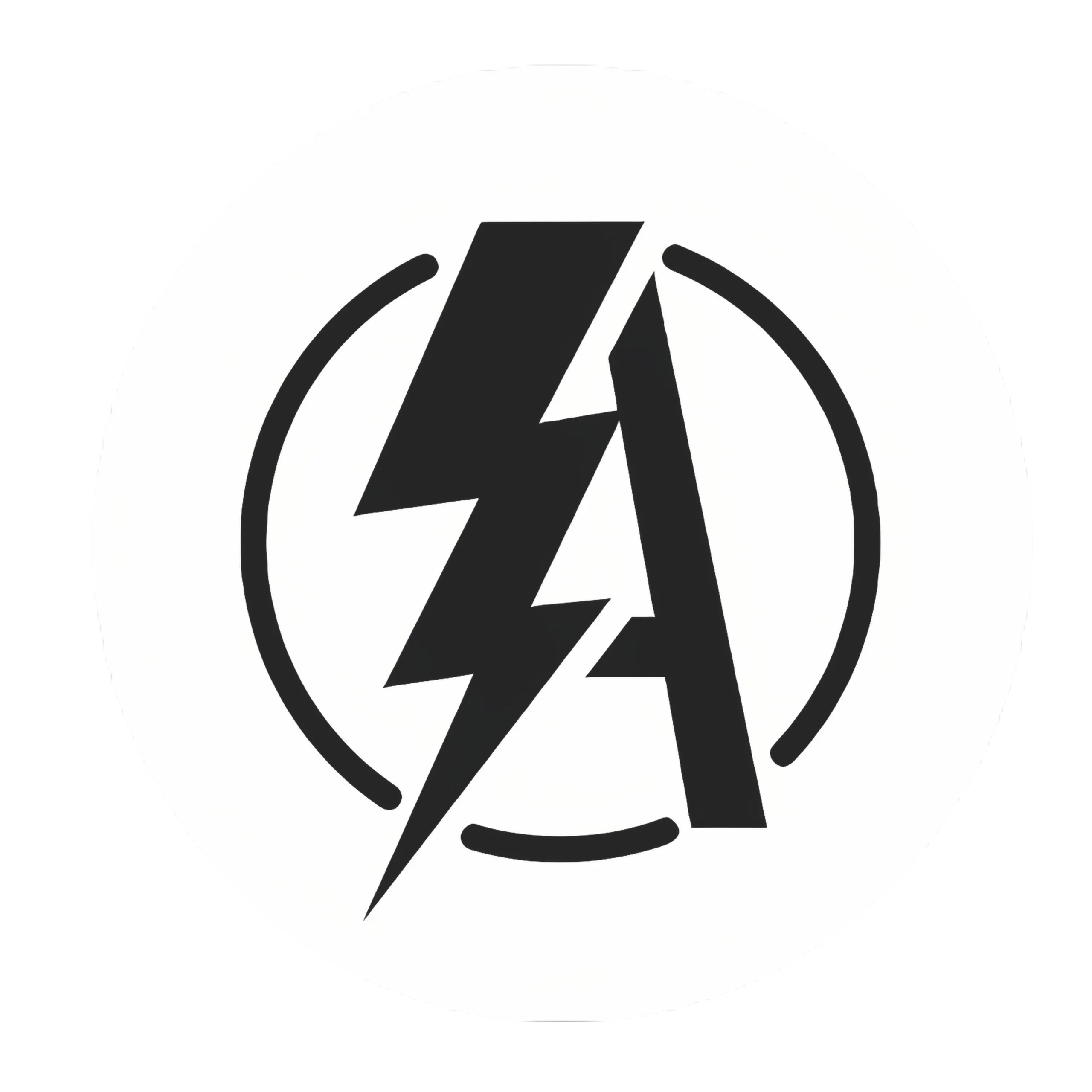Are you eager to boost your website’s visibility and performance on search engines but want to avoid the costs of a professional SEO service? You’re in good company. Countless website and small business owners are looking for strategies to handle DIY SEO on their own, aiming to save both money and time.
Embarking on a DIY SEO journey is not only possible but also highly rewarding, provided you adhere to a set of simple steps and best practices.
In this guide, we’ll walk you through 7 beginner-friendly steps to mastering SEO independently. You’ll discover how to establish your SEO objectives, conduct keyword research and optimization, enhance your website’s structure, create and optimize content, generate credible backlinks, leverage social media and local SEO, and track your progress to refine your strategies.
By the end of this guide, you will have a robust foundation for conducting SEO independently and achieving your online ambitions.
Ready to embark on this journey? Let’s get started!
1. Set Your SEO Goals
The initial step in self-managed SEO is to establish your SEO goals. These are specific, measurable objectives designed to be achieved within a set timeframe. They guide your focus and allow you to monitor advancements.
Without SEO goals, you’re essentially navigating without a map.
Understand What You Want to Achieve
Identifying your SEO goals begins with clearly understanding your website’s purpose, your target audience, their needs, and how you can address these. Whether your site is an e-commerce platform aiming to boost sales or a blog looking to grow its subscriber base, your SEO objectives should mirror your business aims and the value you deliver to your clientele.
Setting Realistic Expectations
With a solid grasp of your desired outcomes, it’s important to set realistic expectations for your SEO journey. The key is to recognize that SEO is a gradual process, not an instantaneous solution. It’s unrealistic to anticipate top Google rankings overnight or a sudden surge in traffic.
Realistic goal setting involves thorough research and analysis to comprehend your current standing, competition, and potential opportunities. Employing tools and data for performance measurement and gap identification is essential. Adopting the SMART framework—specific, measurable, achievable, relevant, and time-bound—helps refine your objectives. For instance, rather than a nebulous aim like “increase traffic,” a SMART objective would be to “boost organic traffic by 30% within six months,” providing a clear target and measurable milestones.
2. Keyword Research and Optimization
The second step to doing SEO yourself involves conducting keyword research and optimization. Keywords are the words and phrases people type into search engines when looking for information, products, or services online. You want your website to be associated with and rank for these terms in search engine results.
Keyword research and optimization enable you to discover and apply the most effective keywords for your website and its content.
Identifying Your Keywords
To pinpoint your keywords, brainstorm potential terms relevant to your website, your SEO objectives, and your target audience. Consider the topics, questions, challenges, and solutions your site addresses.
Tools like Google Suggest and Google Trends can also help you uncover keywords related to your niche and track their popularity over time.
For instance, if your site focuses on DIY SEO, typing “DIY SEO” into Google can reveal additional related keywords. Google Trends allows you to monitor how interest in DIY SEO has evolved, comparing it to related terms.
Using Tools for Keyword Research
After compiling a list of potential keywords, it’s essential to utilize keyword research tools for analysis and evaluation. These tools can offer more keyword suggestions and vital data like search volume, keyword difficulty, competition, and search intent.
Search volume indicates the number of searches for a keyword within a specific timeframe. Keyword difficulty shows the challenge level in ranking for a keyword.
The competition reflects how many websites target the same keyword. Search intent reveals the searcher’s goal or what they hope to find.
Among the various keyword research tools available, Semrush stands out for its comprehensiveness. The Keyword Magic Tool by Semrush assists in finding and analyzing keywords for your SEO plan.
By entering a seed keyword, you can access thousands of related keywords with metrics and filters. Semrush’s Organic Research tool also lets you discover which keywords your competitors rank for and strategies to outperform them.
Implementing Keywords into Your Content
The final keyword research and optimization step is incorporating your keywords into your content. This involves placing your keywords in strategic locations on your site, such as title tags, meta descriptions, headings, body text, images, and URLs.
Using your keywords naturally and avoiding keyword stuffing can detract from your SEO efforts and user experience by making your content appear spammy and irrelevant.
Adhere to SEO best practices to integrate your keywords effectively. These include using your primary keyword in your title tag and early in your content, employing descriptive anchor text for links, incorporating long-tail keywords and variations throughout your content, and including keywords in your image file names and alt text. Moreover, ensure your content is high-quality, engaging, informative, satisfying search intent and delivering value to your audience.
3. Optimize Your Website’s Structure
Optimizing your website’s structure is the third step to doing SEO yourself. Your website’s structure is how your pages, content, and elements are interconnected and arranged. It affects both your user experience and your search engine optimization.
A good website structure helps users navigate your pages easily, and it helps search engines crawl your site and understand your content.
Ensuring Mobile-Friendliness
One of the most important aspects of optimizing your website’s structure is ensuring mobile friendliness. Mobile friendliness means that your website adapts to different screen sizes and devices, such as smartphones and tablets. It also means your website is fast, responsive, and easy to use on mobile devices.
Mobile-friendliness is essential for SEO because Google uses mobile-first indexing, which means that it prioritizes the mobile version of your website over the desktop version when ranking your pages. If your website is not mobile-friendly, you risk losing traffic and conversions from mobile users, who account for more than half of the global web traffic.
You also risk losing ranking positions and visibility in search results.
To ensure mobile friendliness, you need to use a responsive web design, which automatically adjusts your website’s layout and content to fit different screen sizes and orientations. You also need to avoid common mobile usability issues, such as small text, large images, pop-ups, and horizontal scrolling. You can use tools like Google’s Mobile-Friendly Test and PageSpeed Insights to check and improve your website’s mobile friendliness.
Improving Site Speed
Another critical aspect of optimizing your website’s structure is improving site speed. Site speed is how fast your website loads and responds to user interactions.
It affects both your user experience and your SEO. A fast website improves user satisfaction, engagement, and conversion rates. A slow website frustrates users, increases bounce rates, and lowers ranking positions.
Site speed is essential for mobile users, who expect websites to load in less than three seconds. Google also considers site speed a ranking factor for desktop and mobile searches.
If your website is slow, you lose the opportunity to reach and convert potential customers.
To improve site speed, you must optimize your website’s performance and reduce loading time. Techniques such as compressing images, minifying code, caching content, reducing redirects, and using a content delivery network (CDN) can help.
You can use tools like Google’s PageSpeed Insights and Lighthouse to measure and improve your website’s speed.
Creating a Logical Site Hierarchy
The final aspect of optimizing your website’s structure is creating a logical site hierarchy. A site hierarchy organizes and classifies your website’s pages into categories and subcategories.
It helps users find and access your content quickly and intuitively. It also helps search engines understand your website’s structure and theme.
A logical site hierarchy follows a hierarchical or tree-like model, where the homepage is the root, the main categories are the primary branches, the subcategories are the secondary branches, and the individual pages are the leaves. This model is clear and simple, and it mimics how people naturally categorize information.
It also makes internal linking easier, as you can link from the homepage to a category to a subcategory to an individual page, creating a clear path for users and search engines.
To create a logical site hierarchy, you need to plan and design your website’s navigation, which includes your main menu, footer menu, sidebar menu, and breadcrumb navigation. You also need to create and update your sitemap, a file that lists all your website’s pages and their relationships. You can use tools like Yoast SEO and Google Search Console to create and submit your sitemap to Google.
4. Content Creation and Optimization
The fourth step to doing SEO yourself is creating and optimizing your website’s content. Content is the core of your SEO strategy, as it provides value to your audience and signals to search engines what your website is about.
However, not all content is created equal. You must create content that matches the search intent, is unique and comprehensive, and follows the on-page SEO basics.
Matching Content with Search Intent
Search intent is the goal or purpose behind a search query. It tells you what the searcher wants to achieve or learn from the search.
For example, someone searching for “DIY SEO” might want to learn how to do SEO themselves, while someone searching for “DIY SEO course” might want to enroll in a training program.
To match your content with the search intent, you need to understand the different types of search intent and how they affect the content format and style. There are four main types of search intent:
- Informational: The searcher wants to find information on a topic or answer a question, such as “what is SEO” or “how to do SEO.” The content format for informational intent is usually a blog post, a guide, a video, or an infographic.
- Navigational: The searcher wants to visit a specific website or page, such as “Semrush login” or “Ahrefs blog.” The content format for navigational intent is usually a landing page, a homepage, or a category page.
- Transactional: The searcher wants to buy a product or service, such as a “DIY SEO course” or “SEO tools.” The content format for transactional intent is usually a product page, a sales page, or a comparison page.
- Commercial: The searcher wants to compare different products or services before making a purchase decision, such as “best SEO tools” or “Semrush vs Ahrefs.” The content format for commercial intent is usually a review page, a comparison page, or a listicle.
To match your content with the search intent, you must do keyword research and analyze the search results for your target keyword. See what type of content is ranking well and what format and style they use. Then, create your content accordingly, ensuring it satisfies the search intent and provides value to your audience.
Making Your Content Unique and Comprehensive
To make your content stand out from the crowd and rank well in search engines, you must make it unique and comprehensive. Unique content means that it is original and not copied or duplicated from other sources. Comprehensive content means that it covers the topic in depth, providing all the relevant information and details that the searcher needs.
To make your content unique and comprehensive, you need to research and analyze your topic and your competitors. Find out what questions, problems, and solutions your audience seeks and what gaps and opportunities exist in the existing content.
Then, create your content using your own words, voice, and style, adding your insights, examples, and data. You can also use tools like Semrush’s SEO Content Template and SEO Writing Assistant to help you create unique and comprehensive SEO-friendly content.
On-Page SEO Basics
The final content creation and optimization step is following the on-page SEO basics. On-page SEO refers to optimizing your content and HTML elements for your target keyword and search intent. It helps search engines understand your content and rank it accordingly.
It also helps users find and read your content easily and intuitively.
Some of the on-page SEO basics that you need to follow are:
- Use your target keyword in your title tag, meta description, URL, headings, and content, but avoid keyword stuffing and use natural and descriptive language.
- Use descriptive and relevant anchor text for your internal and external links, and link to high-quality and authoritative sources.
- Use images, videos, and other multimedia elements to enhance your content and make it more engaging and informative. Include keywords in your image file names and alt text.
- Use headings, bullet points, lists, and short paragraphs to structure your content and make it easy to scan and read.
- Use tools like Yoast SEO and Ahrefs’ Site Audit to check and improve your on-page SEO and fix any issues or errors.
5. Build Credible Backlinks
The fifth step to doing SEO yourself is building credible website backlinks. Backlinks are links from other websites that point to your website.
They are one of the most important ranking factors for SEO, as they signal to search engines that your website is trustworthy, authoritative, and relevant. However, not all backlinks are created equal.
You need to focus on quality over quantity when it comes to backlinks.
Understanding the Importance of Quality over Quantity
Quality over quantity means that you should aim to get backlinks from websites that are relevant to your niche, have high domain authority, and provide value to their audience. These types of backlinks can boost your SEO and drive organic traffic to your website. On the other hand, you should avoid getting backlinks from websites that are irrelevant, spammy, or low-quality.
These types of backlinks can harm your SEO and get you penalized by Google.
To assess the quality of a backlink, you need to consider several factors, such as:
- The relevance of the linking website to your topic and industry.
- The authority and trustworthiness of the linking website and its domain.
- The popularity and traffic of the linking website and its page.
- The anchor text and context of the link.
- The number and quality of other links on the linking page.
- The diversity and naturalness of your backlink profile.
You can use tools like Semrush’s Backlink Analytics and Backlink Audit to check and monitor the quality of your backlinks and identify any issues or risks.
Strategies for Acquiring Good Backlinks
There are many strategies for acquiring good backlinks, but some of the most effective ones are:
- Guest posting: Writing and publishing content on other relevant and authoritative websites and getting a link back to your website.
- Resource pages: Finding and contacting websites that have pages with links to useful resources in your niche and offering them your content as an additional resource.
- Directories: Submitting your website to reputable and niche-specific directories that list websites in your industry or category.
- Testimonials: Writing testimonials or reviews for products or services you use and getting a link back to your website from the provider’s website.
- Broken link building: Finding and contacting websites with broken links to pages similar to your content and suggesting your content as a replacement.
- Linkable assets: Creating and promoting content that attracts links naturally, such as original research, infographics, guides, or tools.
- Digital PR: Building relationships with journalists, bloggers, and influencers and getting featured or mentioned in their stories or articles.
For each strategy, you need to research and reach out to find and contact potential link partners. You also need to provide value and relevance to them and their audience.
You can use tools like Semrush’s Link-Building and Outreach Tools to help you find and manage your link-building opportunities.
6. Utilize Social Media and Local SEO
The sixth step to doing SEO yourself is to utilize social media and local SEO to boost your online presence and reach more potential customers. Social media and local SEO are powerful ways to connect with your audience, increase your brand awareness, and drive traffic to your website. However, you need to optimize your social media profiles, posts, and local business listings to rank higher on social platforms and search engines.
Leveraging Social Media Platforms
Social media platforms are great for engaging with your existing customers and attracting new ones. By creating and sharing valuable content on social media, you can increase your reach and visibility, generate social signals, and drive organic traffic to your website.
However, you need to optimize your social media profiles and posts for SEO and your audience.
To leverage social media platforms for SEO, you need to follow some best practices, such as:
- Use your main keyword in your page title, vanity URL, about section, and description.
- Add your business address to your profile if it’s relevant for local SEO.
- Use relevant hashtags, keywords, and tags in your posts, but avoid spamming and use natural language.
- Use images, videos, and other multimedia elements to enhance your posts and make them more engaging and informative. Include keywords in your image file names and alt text.
- Encourage engagement and interaction with your audience by asking questions, responding to comments, and sharing user-generated content.
- In your posts and bio, link to your website and other relevant pages, using descriptive and relevant anchor text.
- Measure and analyze your social media performance and SEO impact using Semrush’s Social Media Toolkit and Google Analytics.
Optimizing for Local Searches
If your website targets a specific area or city, you need to optimize it for local searches. Local SEO is the process of improving your website’s visibility and relevance for local queries, such as “DIY SEO course near me” or “DIY SEO course in Nanterre.”
Local SEO can help you rank higher in Google’s map results and organic results and attract more local customers to your website and business.
To optimize your website for local searches, you need to follow some best practices, such as:
- Create and optimize your Google Business Profile, a free listing showcasing your business information, location, reviews, and updates on Google Search and Maps.
- Use your location and relevant keywords in your title tags, meta descriptions, headings, and content, but avoid keyword stuffing and use natural language.
- Add your business name, address, and phone number (NAP) to your website and other online directories, and make sure they are consistent and accurate.
- Use schema markup, a code that helps search engines understand your website’s structure and content, and add local business schema to your website.
- Collect and manage customer reviews on your website, Google Business Profile, and other platforms, and respond to them politely and professionally.
- Build local backlinks from relevant and authoritative websites in your area or industry, such as local newspapers, blogs, or associations.
- Use tools like Semrush’s Local SEO Toolkit and Google My Business to check and improve your local SEO and monitor your local rankings.
7. Measure Your Success and Iterate
The seventh and final step to doing SEO yourself is to measure your success and iterate your strategy. SEO is not a one-time project but an ongoing process that requires constant monitoring, analysis, and improvement.
You need to set up analytics tools to track your SEO performance and results and make adjustments based on the data and feedback.
Setting Up Analytics
To measure your SEO success, you need to set up analytics tools that can help you collect and visualize data about your website’s traffic, rankings, conversions, and more. There are many analytics tools available, but some of the most popular and essential ones are:
- Google Analytics: This free tool tracks and reports your website’s traffic, behavior, and conversions. You can use Google Analytics to measure your organic traffic, bounce rate, pages per visit, conversion rate, and other metrics that reflect your SEO performance and goals. You can also create custom reports and dashboards to visualize your data and insights.
- Google Search Console: This free tool helps you monitor and optimize your website’s presence and performance in Google’s search results. You can use Google Search Console to measure your keyword rankings, impressions, clicks, click-through rate, and other metrics showing your website is performance in organic search. You can also use Google Search Console to submit your sitemap, fix crawl errors, and improve your site’s technical SEO.
- Semrush is a paid tool that offers a comprehensive suite of SEO features and functions. It can measure your keyword rankings, backlinks, site speed, technical SEO, and other metrics that affect your SEO performance and results. You can also use Semrush to conduct keyword research, competitor analysis, content optimization, link building, and other SEO tasks.
To set up analytics tools, you need to follow the instructions and guidelines provided by each tool. You also need to connect and integrate your tools, such as linking your Google Analytics and Google Search Console accounts or connecting your Semrush account with your Google Analytics and Google Search Console accounts.
You can access and analyze your data from different sources and perspectives.
Tracking Progress and Making Adjustments
Once you have set up your analytics tools, you need to track your progress and adjust your SEO strategy. Tracking progress means measuring and monitoring your SEO performance and results over time and comparing them with your SEO goals and benchmarks. Adjusting means identifying and implementing changes and improvements to your SEO strategy based on the data and feedback.
To track progress and make adjustments, you need to follow some best practices, such as:
- Use the SMART framework to make your SEO goals specific, measurable, achievable, relevant, and time-based.
- Use the right metrics and KPIs to measure your SEO success, such as organic traffic, keyword rankings, click-through rate, conversion rate, backlinks, and ROI.
- Use different tools and platforms, such as Google Analytics, Google Search Console, Semrush, and Google Data Studio, to track and visualize your SEO performance and results.
- Compare your SEO performance and results over comparable periods, such as month-over-month or year-over-year, to account for seasonality and trends.
- Analyze your SEO performance and results from different angles and dimensions, such as by device, location, channel, page, keyword, and competitor.
- Identify your SEO strengths and weaknesses, opportunities and threats, and gaps and potentials based on your data and insights.
- Implement changes and improvements to your SEO strategy, such as adding new keywords, optimizing existing content, fixing technical issues, building new links, and creating new content.
- Test and measure the impact of your changes and improvements, and iterate your SEO strategy accordingly.
By tracking progress and making adjustments, you can ensure that your SEO strategy is aligned with your SEO goals and business objectives and that you are constantly improving your website’s visibility and performance in search engines.
Conclusion
You’ve just learned how to do SEO yourself in 7 beginner steps that anyone can follow. You’ve learned how to set your SEO goals, research and optimize keywords, optimize your website’s structure, create and optimize content, build credible backlinks, utilize social media and local SEO, and measure your success and iterate. By following these steps and best practices, you can improve your website’s visibility and performance in search engines and achieve your online goals.
However, SEO is not a one-time project but an ongoing process that requires constant monitoring, analysis, and improvement. You need to keep up with the latest trends and updates in SEO and adapt your strategy accordingly. You also need to use the right tools and data to track and measure your SEO performance and results and make adjustments based on the data and feedback.
If you want to learn more about SEO and how to do it yourself, you can enroll in our DIY SEO course, which will teach you everything you need to know about SEO simply and practically. You’ll also get access to our DIY SEO toolkit, which includes all the tools and resources you need to do SEO yourself. Don’t miss this opportunity to boost your online presence and reach more potential customers.
Sign up for our DIY SEO course today and get started on your SEO journey!
FAQ
Can I do SEO on my own?
Yes, you can do SEO on your own. SEO is the process of optimizing your website and content for both search engines and users. To embark on DIY SEO, you must grasp the basics, including keyword research, on-page optimization, technical SEO, link building, and analytics.
You can leverage free tools and resources, such as [Google Keyword Planner], [Screaming Frog], and [SEO.com], to assist you.
How to do SEO for beginners?
SEO, or search engine optimization, enhances your website’s visibility and relevance for search engines and users. For beginners, follow these steps to start your SEO journey:
- Step 1: Identify keywords that align with your audience’s search intent and your website’s objectives.
- Step 2: Incorporate keywords into your page title, the primary headline in search results and browser tabs.
- Step 3: Include keywords in your page URL, the web address identifying your page.
- Step 4: Utilize keywords in your meta description and a summary below the title in search results.
- Step 5: Embed keywords in your H1 text, the second most crucial headline on your page.
- Step 6: Use keywords throughout the page’s content, the main body of text, images, and other elements that inform your visitors.
- Step 7: Build links to your website from other relevant and authoritative sites, signaling your website’s trustworthiness and value to search engines.
- Step 8: Monitor your website’s rank, which is its position in search results for your target keywords.
Can SEO be self-taught?
Yes, SEO can be self-taught. Numerous online resources, including blogs, guides, tools, and courses, are available to help you learn SEO basics and enhance your website’s visibility and traffic.
However, mastering SEO requires time, patience, and practice, as SEO is a complex and ever-evolving field.
How to do SEO manually?
To manually undertake SEO, follow these steps:
- Address technical issues, employ descriptive URLs, group similar pages, and minimize duplicate content to optimize your website for search engines.
- Create and publish content relevant to your target audience by discovering and utilizing keywords, crafting clear titles, descriptions, and headings, and linking articles internally.






